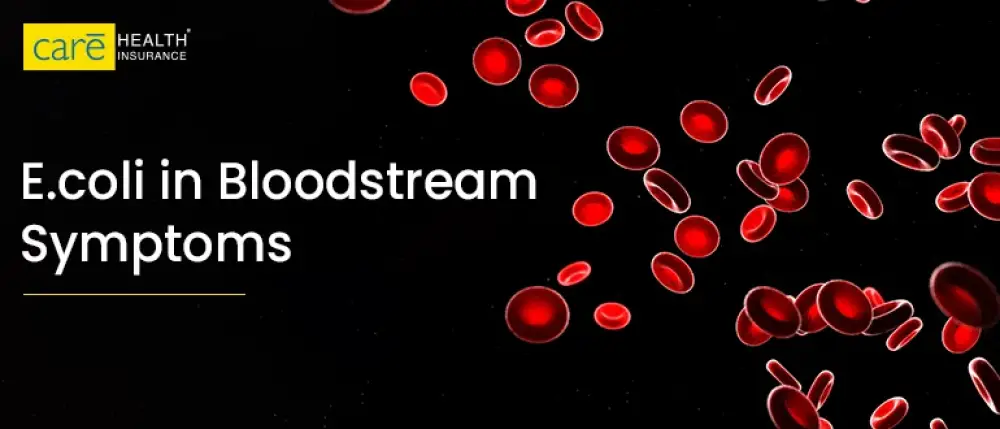Subscribe to get weekly insights
Always stay up to date with our newest articles sent direct to your inbox
Published on 6 Dec, 2024
Updated on 27 Oct, 2025
7730 Views
2 min Read

Written by Mudit Handa
favorite3Likes
E.coli, or Escherichia coli, is a type of bacteria found in the intestines of both humans and animals. In most cases, E.coli is harmless and even plays a role in the digestive process. However, certain strains of E.coli can be harmful and cause serious infections if they enter the bloodstream or are ingested. These harmful strains can lead to systemic diseases with a variety of concerning symptoms and can potentially invade important organs.
In this blog post, we will discuss E.coli in blood, causing infections, exploring its causes, symptoms, and available treatment options.
Septicemia, also known as blood poisoning, occurs when bacteria infect the bloodstream and spread to different organs. E.coli septicemia specifically refers to septicemia caused by the E.coli pathogen strain. The presence of E.coli in the blood triggers the body’s inflammatory response to septicemia or blood infection. This inflammatory response is called sepsis or E.coli sepsis, which is life-threatening and can cause organ failure or death.
Exposure to E.coli bacteria results in an E.coli blood infection. The main causes of bacteria exposure are:
E.coli bloodstream infection is common in:
Here are some early signs of E.coli septicemia, which start to appear 3 to 4 days after exposure to bacteria:
Diagnosis to check the presence of E.coli bacteria in blood is done through blood tests and stool tests. The presence of E.coli in blood culture tests confirms an E.coli blood infection.
After confirming the presence of E.coli in blood culture, treatment starts. The treatment for E.coli bloodstream infection involves:
The choice of antibiotic medication and the course of treatment depends on the severity of the infection. In case the infection is caused due to an underlying condition, addressing the underlying condition will prevent the infection from spreading. Timely treatment is important to reduce the risk of any complications.
>> Also Read: Blood in Stools: Does it Hint at a Serious Health Problem?
To prevent an E.coli blood infection, follow the given strategies,
E.coli septicemia is a life-threatening infection which requires immediate medical attention and treatment. Being aware of the symptoms and understanding the causes can save lives from this silent killer. Practising prevention strategies and maintaining good health are equally important to avoid an infection completely.
Care Health Insurance offers robust health insurance plans that shield your family from the financial strain during E.coli septicemia treatment. Our comprehensive coverage includes hospitalisation, diagnostics, and outpatient care, not just for E.coli infection but also for underlying chronic health conditions under designated plans. Contact our team of insurance experts today, to learn about the various comprehensive health insurance plans available.
Disclaimer: The above information is for reference purposes only: Policy Assurance and Claims at the underwriter's discretion.
Thyroid : मामूली नहीं हैं महिलाओं में थायराइड होना, जानें इसके लक्षण और घरेलू उपचार Vipul Tiwary in Diseases
शुगर कंट्रोल कैसे करे? जानें, डायबिटीज में क्या खाना चाहिए Vipul Tiwary in Health & Wellness
हाई ब्लड प्रेशर को तुरंत कंट्रोल कैसे करें? देखें इसके उपाय Vipul Tiwary in Diseases
पैरों में दर्द किस कमी से होता है? जानें, इसके घरेलू इलाज Vipul Tiwary in Health Insurance Articles
When Silent Clots Threaten Your Life: DVT Pratham Gupta in Diseases
What are Dandruff Symptoms and Their Causes? Pratham Gupta in Diseases
What is Atherosclerosis, its Symptoms, and Treatment? Bhawika Khushlani in Diseases
What Is a Hysterectomy? A Complete Guide For Women’s Health Pratham Gupta in Diseases
Always stay up to date with our newest articles sent direct to your inbox
Loading...